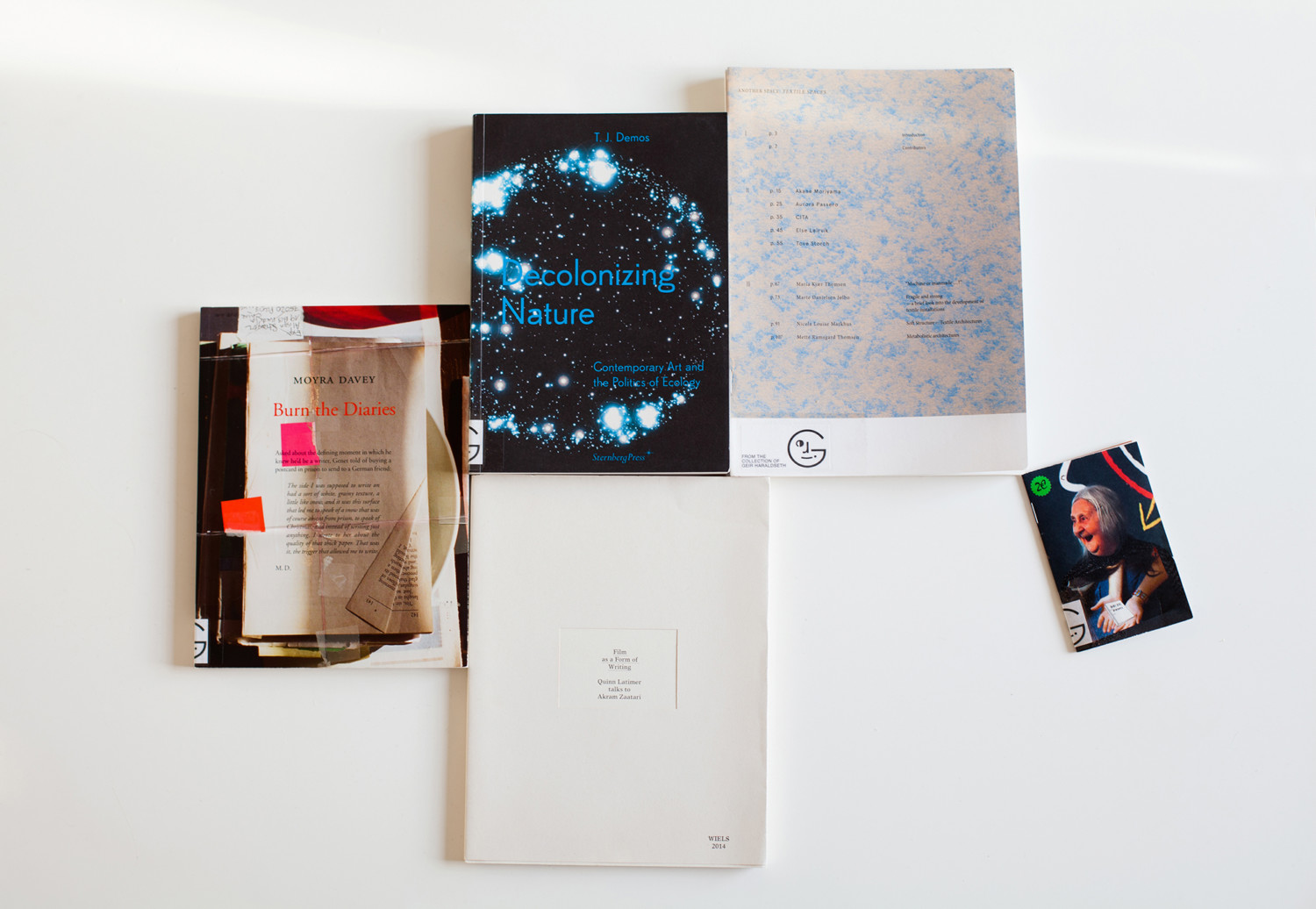Fra biblioteket

Vår praktikant Ananda Serné har tilbrakt høsten 2016 i biblioteket. Der har hun katalogisert, registrert og merket bøker og her presenterer hun et utvalg gjort for februar 2017:
Five books that I was tempted to steal from the library while working there
Burn the Diaries, Moyra Davey
mumok, 2014
Film as a Form of Writing: Quinn Latimer talks to Akram Zaatari
WIELS, 2014
BABY DOC, Laetitia Paviani & Camilla Wills
2016
Decolonizing Nature, T.J. Demos
Sternberg Press, 2016
Another Space: Textile Spaces
Another Space, 2013
Clarice Lispector’s short story One Hundred Years of Forgiveness opens with: ‘Someone who has never stolen is not going to understand me. And someone who has never stolen roses will never be able to understand me. When I was little, I stole roses.’
However much I enjoy the idea of a child who steals roses or a librarian with bibliokleptomania, I tried not to be inspired by this story. The following books are still on the library shelves, accessible to anyone who might want to look inside.
- I was tempted to steal Moyra Davey’s Burn the Diaries for the simple reason that I have often thought about buying it, but never got around doing so before it went out of stock. Moyra Davey is a favourite of mine. In Burn the Diaries, she reflects on the works of the French writer, activist and small-time criminal Jean Genet, while also blending in moments from her own life (cutting books in half to read them on the subway).
- Film as a Form of Writing came into being during the preparations of Akram Zaatari’s exhibition at WIELS. I actually already own a copy of this publication, but I wouldn’t mind a second one. There’s lots to contemplate here: Zaatari mentions that he likes to refer to films as ‘letters’, he discusses the employment of refusal in contemporary art and his obsession with childhood memories (the sound of a school bell).
- BABY DOC is a magazine created by Laetitia Paviani and Camilla Wills. The magazine changes in size with each new issue, the version at the Kunstsenter measuring 10,8 cm on the longest side. Because of its size, it is easily overlooked and it is therefore the only book or magazine that has its very own section on the library shelves. Which means that, if it were to disappear, the entire section would be gone.
- J. Demos’ Decolonizing Nature offers a great read on the intersection of contemporary art, ecology and environmental activism. The chapters focus on aesthetic and political processes in, among others; Mexico, India, the Arctic and several small island nations.
- Another Space: Textile Spaces presents the use of textile as a contemporary artistic medium while also investigating its history and use in architecture. The book can be opened from three different sides and is filled with references and images, which makes it beautiful and exciting in a way that resembles moving with wonder through a new language: although I have flipped through the book several times, new pages keep popping up.